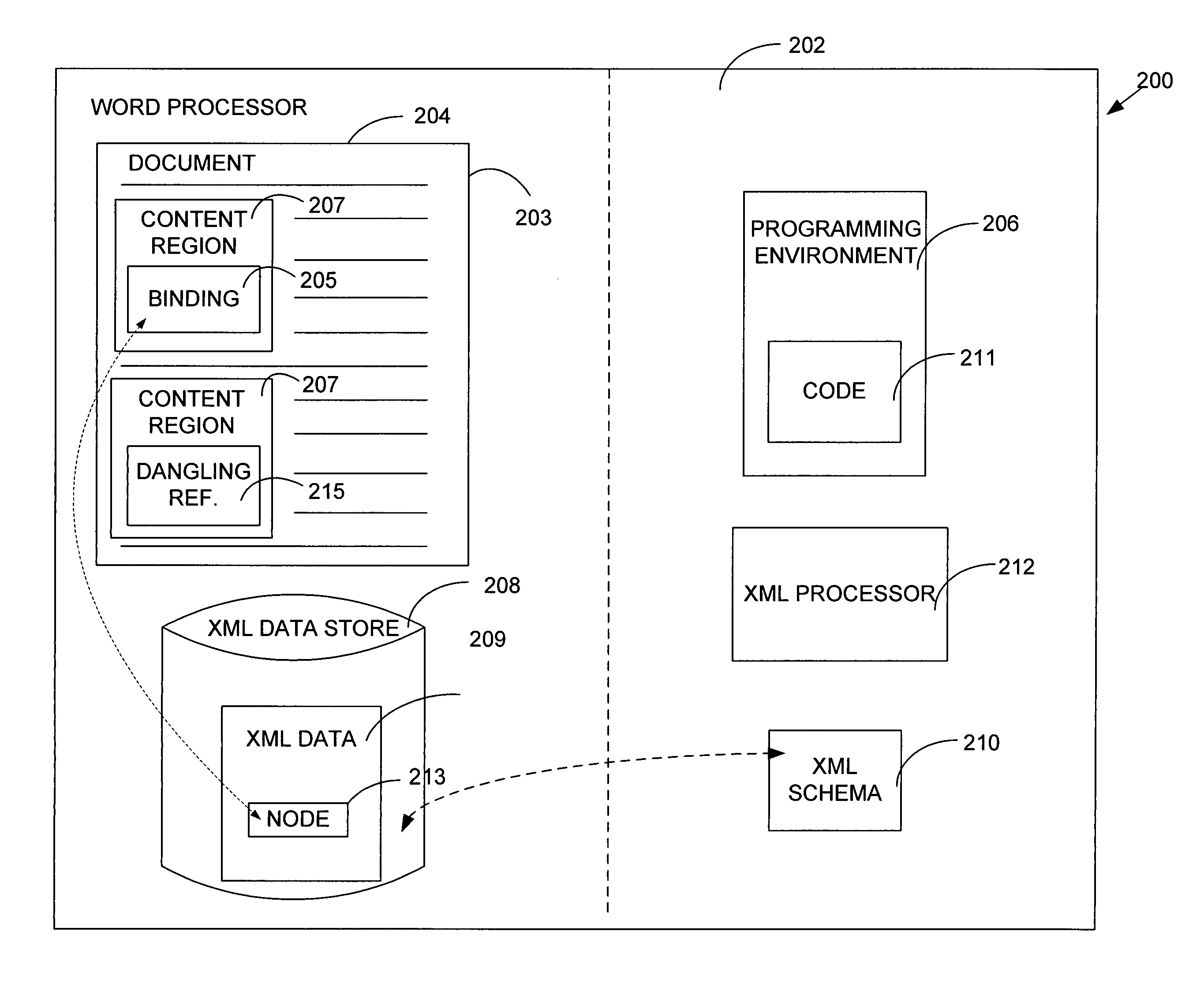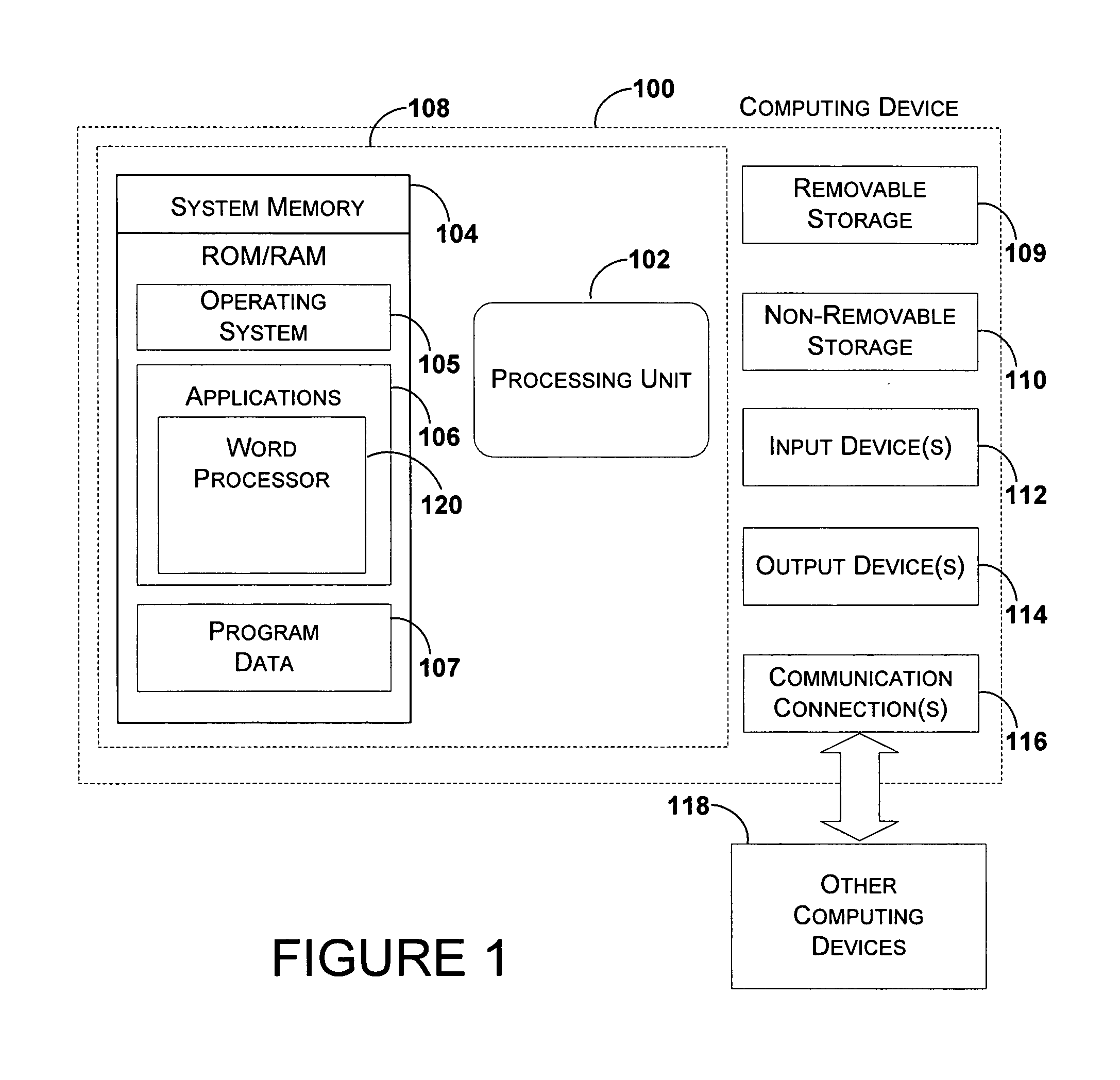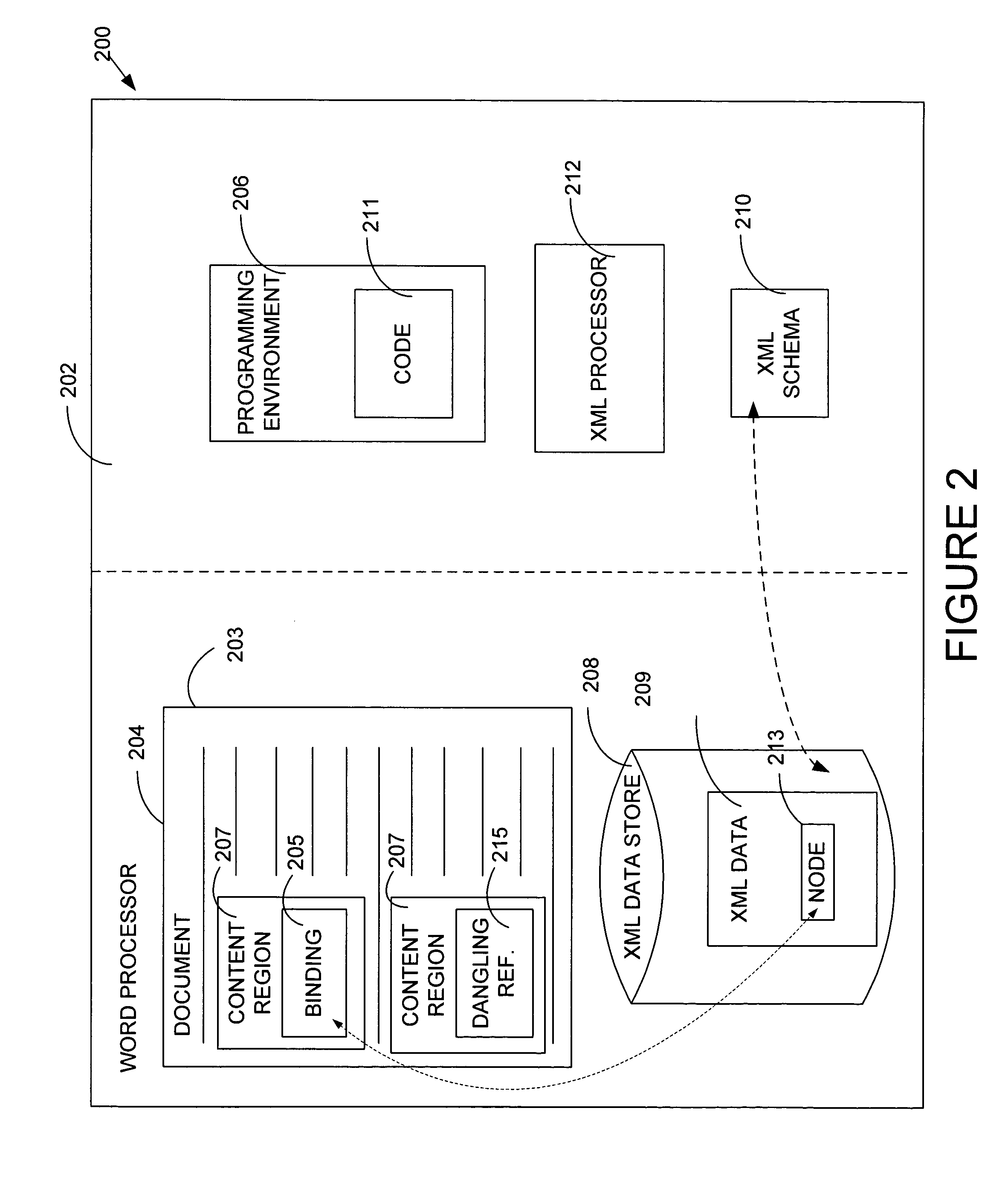XML schema for binding data
a technology of binding data and schema, applied in the field of xml schema for binding data, can solve the problems of word processor applications, end users of documents not being able to freely manipulate the presentation, and significant changes in the location of custom xml tags within the surrounding word processor's native tags
- Summary
- Abstract
- Description
- Claims
- Application Information
AI Technical Summary
Benefits of technology
Problems solved by technology
Method used
Image
Examples
Embodiment Construction
[0020] Throughout the specification and claims, the following terms take the meanings explicitly associated herein, unless the context clearly dictates otherwise.
[0021] The term “data” refers to any supplementary information which is carried with, referred to, or used by the word processor document. This information is often large and is likely not exposed on the presentation layer of the document in its entirety.
[0022] The terms “markup language” or “ML” refer to a language for special codes within a document that specify how parts of the document are to be interpreted by an application. In a word processor file, the markup language specifies how the text is to be formatted or laid out.
[0023] The term “element” refers to the basic unit of an XML document. The element may contain attributes, other elements, text, and other content regions for an XML document.
[0024] The term “presentation” refers to the visible portion of the document—the text and layout that would appear if the ...
PUM
 Login to View More
Login to View More Abstract
Description
Claims
Application Information
 Login to View More
Login to View More - R&D
- Intellectual Property
- Life Sciences
- Materials
- Tech Scout
- Unparalleled Data Quality
- Higher Quality Content
- 60% Fewer Hallucinations
Browse by: Latest US Patents, China's latest patents, Technical Efficacy Thesaurus, Application Domain, Technology Topic, Popular Technical Reports.
© 2025 PatSnap. All rights reserved.Legal|Privacy policy|Modern Slavery Act Transparency Statement|Sitemap|About US| Contact US: help@patsnap.com



